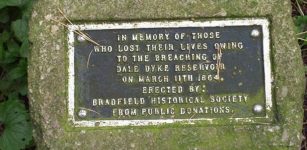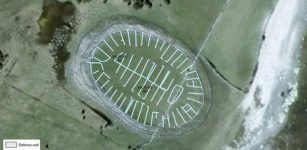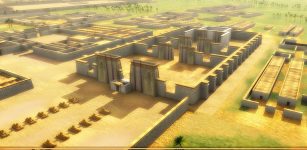When Did Humans Start Using Roads And What Civilization Built The First Paved Roads?
Jan Bartek - AncientPages.com - We can thank the pyramids of Giza for roads. A vital part of our built environment, they've been a staple of human existence for millennia. How they are built and used reveal a lot about our own modern societies and economies, but they can also offer a vital window to the past.
But when did humans actually begin to use roads? "The generic and honest answer is that it's really hard to know," says Kalayci. "First, we have to be very clear in our mind what we mean by 'road'—are we talking about an engineered road, or a simple dirt track that has naturally formed by people and/or animals constantly walking along the same line?"
Credit: Pixabay - 8moments - Public Domain
In the case of the latter, one can argue, rather philosophically, that as soon as humans learnt to walk and began to traverse the world from their African homelands, roads began to form—in short, a road can be conceived as merely a line that humans continuously wander along.
But Kalayci informs us that it was probably the ancient Egyptians that purposely went out of their way to build the first paved roads, when they were busy building pyramids and other monuments, sometime between 2600 and 2200 BCE, during the Old Kingdom Period. "They essentially wanted a nice, easy, straight route between the monument site and quarry that allowed materials to be transported quickly and efficiently," he explains.
The caveat here is that archaeologists can't be sure if someone else beat the ancient Egyptians to it. "The truth is, there may be evidence of earlier paved roads… we just haven't found it yet," Kalayci admits.
The ancient roads of Mesopotamia
Kalayci, a former Marie Curie fellow who worked on the GeoMOP project, focuses his research on Upper Mesopotamia, which consists of the modern-day region of Southern Turkey, Northern Iraq and Syria, and is dominated by the mighty Euphrates and Tigris rivers. This mostly flat region was the stomping ground of some of the more widely known ancient civilizations, such as those of the Akkadians and Assyrians.
"The archaeological record shows that this region became increasingly urbanized during the ancient period, and because of changes to the economy and society, transportation became a much more important consideration," says Kalayci. "Intensive agriculture began to develop, and as a result, they needed to discipline their movement from cities to villages, from the pastures to the market. As a result, people and animals walked along the same routes and caused shallow depressions in the soil—known as 'hollow ways'—that remain to this day."
This was Kalayci's focus during the GeoMOP project, where he utilized satellite images to map and chart the network of ancient roads in the region.
On top of this, his job was to work out not only where the roads were, but how they were used. "I had to figure out what the traffic levels along each route were, and by knowing this, we can get a better idea of the area's complex political economy."
In general, roads have always held a certain allure for Kalayci. "It's a matter of personal curiosity, roads encompass the complexity of humanity very well. When traveling on one, you can read, eat, get annoyed, meet strangers. Roads give interesting clues to the past that are often neglected in archaeology. My work thus aims to make a seemingly invisible human phenomenon just that little bit more visible."
Provided by CORDIS
Written by Jan Bartek - AncientPages.com Staff Writer





















